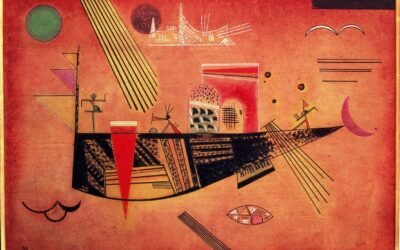Abstract and Main Ideas
- Explanation of common terms used in the Dissociative Identity Disorder (DID) community, such as alter, front, system, and little.
- Description of various types of alters, including animal alters, dead/supernatural/mythic alters, and angelic/demonic alters.
- Introduction of concepts like fragments/protectors, amnesia, and cycling in DID.
- Presentation of a worksheet for mapping DID alters along two axes: consciousness and ego syntonicity/dystonicity.
- Explanation of the four quadrants in the alter mapping system and what they represent.
- Discussion of depth psychology principles for working with DID, emphasizing that alters serve protective functions.
- The goal of DID treatment is to accept and understand parts of self rather than eliminating alters.
- Importance of creativity, art, and writing in exploring and integrating unconscious parts.
- Exploration questions and techniques for understanding alters, including physical sensations and emotional experiences.
- Concept of shadow and paradox in DID, and the importance of finding opposing parts for healing.
Work Sheet for Mapping Dissociative Identity Disorder Alters
Even though most of these terms are not medical or recognized in DSM, ICD and research literature they are prevalent in the DID community. Because the majority of the DID community will seek education and support in online communities before presenting for professional care, it is important that professionals be familiar with common terms and ideas. We use the altar map for DID treatment at Taproot Therapy Collective.
Alter: Alter is another word for personality. Alter refers to all of the micro personality structures that are present. Multiple alters make up the system of someone with DID.
Front: Refers to an alter taking over the system and running it. When an alter “fronts” it takes over the consciousness of the person with DID and the other personalities are pushed to the periphery. Alters that front are often more conscious and integrated into the system. When less conscious alters front the system there is usually more amnesia than when more conscious alters front. Alters that front often have a well developed personality structure.
System: System refers to the entire system of alters and describes the macro personality of the DID person. Finding a coherent sense of self among the various micro personalities is often difficult for a person with DID. Nevertheless, most persons with DID will have an idea of who their authentic self is despite the various personalities present. Less conscious alters will be at the edges of the system and the person with DID may not understand them well. More conscious alters are often better understood by the person with DID and will front and converse more frequently.
Little: Little refers to younger, even infantile, personalities. Littles often are overwhelmed with strong emotion and may appear desperate for connection and attention. This is because littles often represent the strong needs for stability and attachment that children have at early stages of development.
Animal Alters: Traumatized and neglected children often form strong bonds with animals and develop animal alters. Animal alters sometimes personify the positive qualities (strength, independence, affection) that children perceive the animals to have. This is similar to the way that animals are personified in mythology or identified with in shamanistic ritual. Animal alters are often non verbal, more instinctual, and less conscious than human alters.
Dead/Supernatural/Mythic Alters: More ethereal alters are usually less conscious and can have a supernatural quality. They are usually less integrated into the system. Dead alters may be created in a near death experience or when a person wished they had died.
Angelic/Demonic Alters: Angelic and demonic alters are usually deeply unconscious and have a strong moral and spiritual quality. They are usually less conscious and can represent the personalities of caregivers or abusers. Angelic and demonic personalities have a strongly ego syntonic or dystonic quality and elicit strong aversion or fondness in the person with DID. Demonic alters can be created when a child is blamed for abuse and believes they are evil. Demonic alters can also be created as a part that identifies with and wants to take on the qualities of the abuser. Angelic alters can be created when a child creates a supernatural protector to help contain a traumatic experience.
Fragments/Protectors: Fragments and protectors are extreme emotional reactions that are not fully formed personalities. They can be all consuming needs or emotional states (e.g. aggressive hostility, codependent desperation, overwhelming). Fragments and protectors are often hyperbolic “one note” reactions that lack the
Amnesia: Amnesia is the lack of memory induced by the change in personality or by experiencing an unconscious personality. Deeply unconscious alters or
Cycle: Cycling is the rapid change in fronting personalities over a short period of time. Cycling is a process where multiple personalities vie for control of the system. During times of increased stress cycling may increase as different personalities disagree about the best way to handle negative emotions.
Conscious/Unconscious: Conscious alters are alters that the person with DID understands better. Conscious alters usually cause less amnesia than unconscious ones. More conscious personalities are more likely to converse with each other or front the system. Deeply unconscious alters may disgust or terrify the person with DID.
Therapist Instructions:
This worksheet is intended to be an aid when working with Dissociative Identity Disorder. This worksheet is to help persons with DID understand the purpose, identity and function of alters. It should be assigned multiple times over the course of treatment as the understanding, purpose, and awareness of circumstances that created the alters changes, the map will change. The results of the worksheet changing is indicative that the person with DID is realigning their system to reflect a better understanding of the unconscious parts of the system.
There may not be a perfect place to place an alter on the timeline. The point of the exercise is to begin to think about how alters function and it is not always possible to represent perfectly with a coordinate. Some persons with DID might want to make a drawing or note explaining why they chose the position that they chose. Eg. “The Alter is 80% good and 20% bad” or “the alter’s anger protects me but sometimes hurts others”.
Instructions for Worksheet:
There are two axes on the worksheet that alters can be mapped along.
Alters are placed along the X axis depending on how conscious the alter is. Alters are placed along the Y axis depending on how ego syntonic or ego dystonic the alter is.
 X Axis
X Axis
Alters are placed along the X axis depending on how conscious the alter is. Consciousness is a measure of how well a person understands and is comfortable with one of their alter. Less conscious alters have more amnesia associated with them. More conscious alters usually have names and a personality structure that the system understands.
Y Axis
On the Y axis the personality is mapped along how ego syntonic or ego dystonic a person feels about a specific alter. A person’s feelings towards an alter may have some complexity, but they should map alters based on generally how fond or averse they feel towards each alter. Alters often disagree loudly on passing judgement against one another, and might protest at first, but the system should know generally how it reacts to each alter given time.
In Jungian language the bottom of the y axis is nearer to a person’s shadow, or rejected self. The shadow contains the things about ourselves that we do not like or want to accept. Our shadow contains the parts of ourselves that our ego represses because they conflict with our ego driven self image.
Alters fall further down the y axis when they feel “less what I want to be”. Alters move further up the y axis when they feel “more like how I should be“. Alters move more to the middle when they feel “more like I really am”. Alters high up on the y axis might be more perfect or idealistic than the person feels they actually are. For example a highly syntonic alter may be all loving or all knowing or more hard working than the person’s self feels.
Quadrants
- The first quadrant contains ego syntonic and unconscious parts. Because of this the first quadrant will usually contain lit will usually include littles, ethereal and animal parts that are not well understood, but are not threatening to the person with DID. Angelic protective alters may be present here.
- The second quadrant contains parts that are highly conscious and highly egosyntonic. It will usually contain the parts that the person with DID understands that front more often.
- The third quadrant contains parts that are both unconscious and ego dystonic. Because of this, parts of self in the third quadrant are in the deepest parts of the patient’s shadow. The third quadrant contains parts of self that are both unknown and disliked. It will usually contain parts that are highly protective, upsetting to the system, and cause a high level of amnesia. The third quadrant might contain fragments that are overwhelming or extreme emotional reactions. Demonic parts may be present here.
- The fourth quadrant contains parts that are conscious but ego dystonic. As such the fourth quadrant may contain alters that are cynical, mean, evil and distressing to the system. Alters in the fourth quadrant may frequently front but are a last resort and dissimilar to the person with DID’s self image.
Depth Psychology Principles for Working with DID:
The personality structures or “alters” are created as protective parts due to a traumatic event. As such each alter serves a specific function in the system. Each alter protects the client from a specific emotional experience. Eg. shame, emotional vulnerability, physical pain.
Each alter personality is a part of the individual and represents a need for protection from an emotional or environmental experience that the patient had at one time. As such each alter is an important part of the system even if it causes a distressing effect or is ego dystonic to the patient. As each alter is a part of the person, persons with DID should practice feeling comfortable, even grateful, for the function the alter serves.
The goal of therapy is not to kill or get rid of alters. Integrating alters does not mean that they are gone. When alters are unconscious or ego dystonic they often fight for control and destabilize the system. This is similar to all passengers in a van trying to grab the wheel instead of taking turns driving. The goal of DID treatment is to accept and understand the parts of self so that the system can make a more democratic decision. Without treatment the system will tend towards autocracy. When ego dystonic elements and unconscious parts are present the system will experience more amnesia and more severe cycling.
Each of the alters and personalities also have parts of self. Part of understanding and integrating alters is understanding their individual parts. For example, there might be an alter that attacks others to keep me safe, but also hurts people that don’t deserve it. The altar is a protective part that is afraid of being sad. The alter is sad and might need to be comforted. Understanding these functions of the alters is important to accept and integrate them into the system.
Not all personalities have to be understood or mapped for the self to heal. The best outcome is for the system to have more stability and integrity under stress. Personalities that are present and not liked or understood should be investigated. New alters and parts of self will begin to emerge as they are ready to be seen and integrated into the system.
Creativity, art and writing are ways of tapping into the unconscious and are good ways to flesh out and “feel out” misunderstood and unconscious parts.
Exploration Questions
- Take an unconscious alter that you are only partially familiar with and stay with the experience of what your memory of that alter feels like. Start a writing or drawing exercise to communicate the experience of the alter. Writing or drawing does not have to be a narrative examination. You could write a poem or make a collage to capture the feeling of the alter.
- Notice how each alter changes your physical reactions and experience.
How do you talk and communicate while an alter is present? Do you visibly emote more or less? Do you feel angry, lonely or desperate while talking?
What does your skin feel like? Is it hot, cold, numb?
Does the weight in your body change? Does it feel like you are heavier or lighter? Are you pulled downwards, inwards?
Do you feel your posture change? Do you want to stand up and fight, curl into a ball, float away?
You may need a therapist or a witness to examine the way that you are moving and communicating.
- What function does each alter serve? What emotional experience is it protecting you from? Eg. feeling trapped, vulnerable, exposed. If you can keep an alter present you can often ask them what they are protecting you from.
- Our shadow often functions in paradox. For example, the part of me that is afraid of being judged forms an opposite part that judges others. The part of me that feels like it is losing control, drinks to feel in control and loses more control. I may have a punishing and critical part that makes me feel important but also belittles me and others, leaving me sad alone and … ultimately unimportant.
For every part of ourselves that we cling to, we have an opposite part that we reject and suppress. Healing is not about reducing the symptoms as much as bringing separate parts of the self closer together.
Find your most extreme alters and try to identify a diametrically opposite part for that alter. This is a hard step that takes time and patience. For each extreme protector or fragment there will often be a diametrically opposing part.
DID Alter Map – Patient Copy (PDF Download)
Bibliography:
Putnam, Frank W. “Dissociation in Children and Adolescents: A Developmental Perspective.” Guilford Press, 1997.
Ross, Colin A. “Dissociative Identity Disorder: Diagnosis, Clinical Features, and Treatment of Multiple Personality.” John Wiley & Sons, 1997.
Schwartz, Richard C. “Internal Family Systems Therapy.” Guilford Press, 1995.
Kluft, Richard P., and Catherine G. Fine, eds. “Clinical Perspectives on Multiple Personality Disorder.” American Psychiatric Press, 1993.
Dell, Paul F., and John A. O’Neil, eds. “Dissociation and the Dissociative Disorders: DSM-V and Beyond.” Routledge, 2009.
Van der Hart, Onno, Ellert R.S. Nijenhuis, and Kathy Steele. “The Haunted Self: Structural Dissociation and the Treatment of Chronic Traumatization.” W.W. Norton & Company, 2006.
Chu, James A. “Rebuilding Shattered Lives: Treating Complex PTSD and Dissociative Disorders.” John Wiley & Sons, 2011.
Howell, Elizabeth F. “The Dissociative Mind.” Routledge, 2005.
Steinberg, Marlene. “Handbook for the Assessment of Dissociation: A Clinical Guide.” American Psychiatric Publishing, 1995.
Boon, Suzette, Kathy Steele, and Onno van der Hart. “Coping with Trauma-Related Dissociation: Skills Training for Patients and Therapists.” W.W. Norton & Company, 2011.

























0 Comments